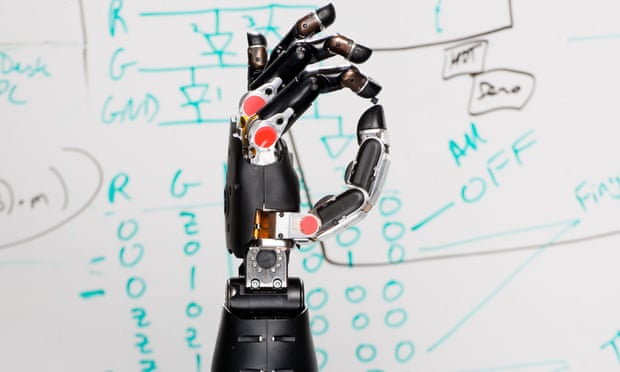A new advanced robotic hand that is wired directly into the brain has been successfully tested, allowing paralysed man to “feel”.
The hand, developed by the Applied Physics Laboratory at Johns Hopkins university, is part of a research project into advanced replacement limbs funded by the US military’s Defense Advanced Research Projects Agency (Darpa).
The 28-year-old man, who has been paralysed for more than a decade after a spinal-cord injury, had electrodes from the prosthetic hand inserted into his sensory and motor cortexes. This allowed him to both control the hand with thought and sense when the fingers of the hand were touched individually.
Sensors in the hand detect pressure applied to any of the fingers and create electrical signals to mimic touch sensations. When blindfolded, the volunteer could determine which finger on the hand was touched with nearly 100% accuracy, according to Darpa.
“At one point, instead of pressing one finger, the team decided to press two without telling him,” Darpa program manager Justin Sanchez said. “He responded in jest asking whether somebody was trying to play a trick on him. That is when we knew that the feelings he was perceiving through the robotic hand were near-natural.”
Sanchez added: “Prosthetic limbs that can be controlled by thoughts are showing great promise, but without feedback from signals traveling back to the brain it can be difficult to achieve the level of control needed to perform precise movements.”
By wiring a sense of touch from a mechanical hand directly into the brain, this work shows the potential for seamless biotechnological restoration of near-natural function. We’ve completed the circuit.”
The hand and the neurotechnologies on which it relies are hoped to allow those who have lost limbs to not only gain fully functioning replacements but also the level of control that can only be offered with sensation.
• The future for augmented humans: ‘In five years you’ll see exoskeletons on the building site’















